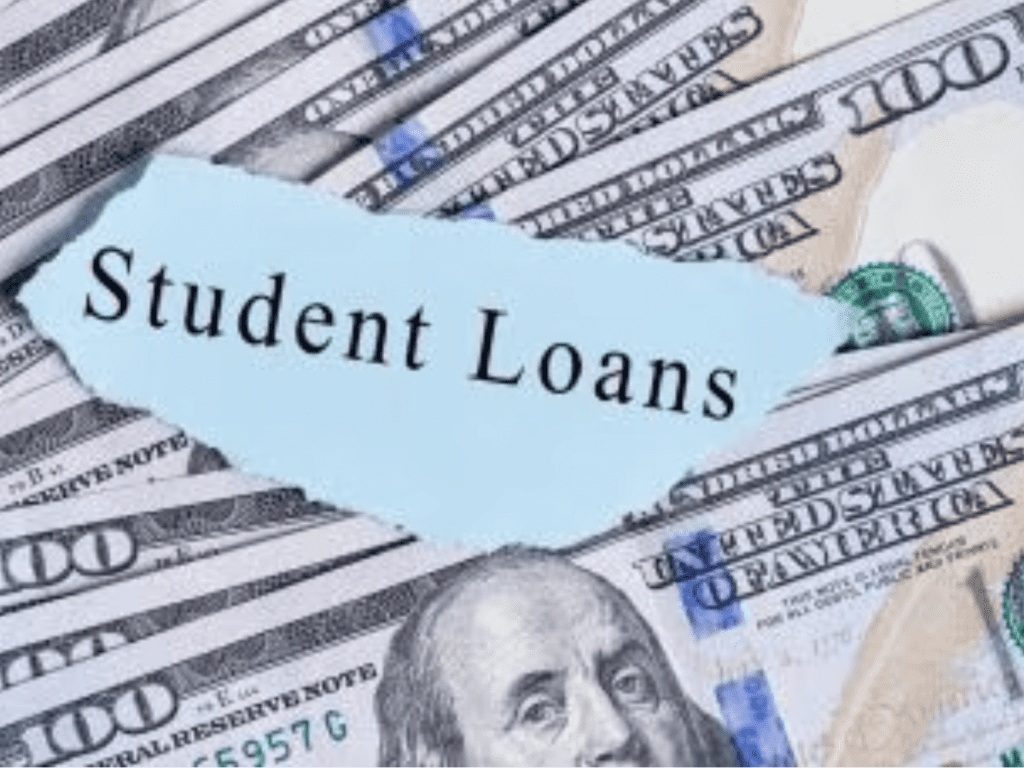Introduction
Attending college is an exciting and life-changing experience. However, it also comes with financial burdens that students must consider before making the leap. For many students, taking out student loans is the only way to afford tuition, fees, books, and living expenses. While loans offer immediate relief, the long-term financial implications of borrowing for college can be significant. The true cost of borrowing for college goes far beyond the amount of money students borrow; it includes interest rates, repayment plans, and the potential for debt accumulation that may impact students’ financial futures.
In this article, we will explore the various aspects of borrowing for college, the financial impact of student loans, and how students can make informed decisions to manage their debt responsibly.
The Basics of Student Loans
Student loans are borrowed funds that need to be repaid with interest over a specified period. They typically come in two forms: federal loans and private loans. Federal student loans are issued by the U.S. Department of Education and often come with lower interest rates, flexible repayment options, and protections like income-driven repayment plans. Private loans, on the other hand, are provided by banks, credit unions, and other financial institutions, and they tend to have higher interest rates and fewer repayment options.
Federal loans come in several types, including Direct Subsidized Loans, Direct Unsubsidized Loans, and Parent PLUS Loans, each with its own terms and conditions. The main difference between subsidized and unsubsidized loans is that subsidized loans do not accumulate interest while the borrower is in school, while unsubsidized loans begin accruing interest as soon as the loan is disbursed.
Private loans may offer lower interest rates initially but are generally less flexible than federal loans in terms of repayment and forbearance options. Borrowers of private loans may also be required to have a creditworthy co-signer, making it more difficult for students with limited credit histories to obtain funding.
How Much Do Students Borrow?
The amount that students borrow varies depending on factors such as the cost of their school, their financial need, and whether they are attending public or private institutions. According to recent data from the Federal Reserve, nearly 45 million Americans collectively owe more than $1.7 trillion in student loan debt, making it one of the largest sources of consumer debt in the country.
The average amount of student loan debt for a graduate of a four-year college was estimated to be around $30,000, but the total amount can be much higher depending on the student’s choice of school. For students who attend private colleges, this figure can be significantly higher, sometimes reaching $50,000 or more in loan debt. In addition to tuition, students may borrow money to cover room and board, textbooks, and other living expenses.
As borrowing increases, so does the financial burden that comes with repaying these loans. The combination of interest, fees, and principal payments can add up over the years, sometimes leading to a higher debt load than originally anticipated.
Understanding Interest Rates and Loan Terms
One of the most important factors to consider when borrowing for college is the interest rate, which determines how much the loan will cost over time. Interest rates on federal student loans are fixed and set by the government, but they can vary depending on the type of loan. For instance, Direct Subsidized Loans for undergraduates have a lower interest rate compared to Grad PLUS loans or Parent PLUS loans. Federal loans often offer lower interest rates compared to private loans, making them a more favorable option for most students.
The length of time it takes to repay the loan also has a significant impact on the total cost. While federal student loans typically have a standard repayment period of 10 years, students can opt for income-driven repayment plans, which can extend the repayment period to 20 or 25 years. While these plans can make monthly payments more affordable, they often result in paying more interest over the life of the loan.
Private loans tend to have variable interest rates, meaning that the rate can change over time, potentially making repayments more expensive as interest rates rise. Additionally, private loans may come with higher interest rates if the borrower has poor credit or lacks a co-signer, making these loans riskier for both the borrower and the lender.
The Cost of Interest Over Time
The true cost of borrowing for college extends far beyond the initial loan amount. Interest can accumulate over time, leading to higher payments and a larger overall debt burden. For example, if a student borrows $30,000 at a 5% interest rate, the total amount paid back over the standard 10-year repayment period would be around $37,500. The additional $7,500 is the interest that accrues over the life of the loan.
If the student opts for an income-driven repayment plan that extends the loan term to 20 years, the total amount repaid could increase significantly. This is because the loan balance continues to accrue interest, and the borrower is making smaller monthly payments over a longer period. In this case, the total repayment could exceed $50,000, depending on the interest rate and loan terms.
Moreover, many federal loans offer a grace period after graduation, typically six months, during which no payments are required. However, interest on unsubsidized loans continues to accumulate during this time, increasing the total amount that must be repaid.
Repayment Plans and Flexibility
Federal student loans come with a variety of repayment options to help borrowers manage their debt. These include:
- Standard Repayment Plan: This is the default repayment plan for federal student loans, and it spreads payments over a 10-year period. While it has the shortest repayment term, it may result in higher monthly payments.
- Income-Driven Repayment Plans: These plans adjust monthly payments based on the borrower’s income and family size. They are particularly helpful for borrowers who may be struggling to make standard payments after graduation. While these plans offer flexibility, they often extend the repayment period and increase the total interest paid over time.
- Graduated Repayment Plan: This plan starts with lower monthly payments that increase every two years. It is ideal for borrowers who expect their income to rise over time.
- Extended Repayment Plan: Available for borrowers with over $30,000 in Direct Loans, this plan extends the repayment period to 25 years, resulting in lower monthly payments but a higher total cost.
In addition to these options, federal student loans also offer forbearance and deferment, which allow borrowers to temporarily suspend their payments under certain circumstances. However, interest continues to accrue during these periods, increasing the total debt.
Private loans typically do not offer as much flexibility as federal loans, and repayment terms can vary depending on the lender. Borrowers may have fewer options for deferring or reducing payments, and missing payments on private loans can have more serious consequences, such as damage to credit scores and legal action.
The Long-Term Financial Impact
The impact of student loan debt can be felt long after graduation. Many young adults face the challenge of managing their loans while trying to establish a career, save for retirement, and cover everyday living expenses. For some, student loan debt can delay important life milestones, such as buying a home, starting a family, or pursuing further education.
In addition to the emotional and psychological toll of carrying significant debt, student loan payments can take up a large portion of a borrower’s income. According to the Federal Reserve, approximately one in four student loan borrowers has monthly payments that exceed 10% of their income. This can create financial stress and limit the borrower’s ability to save for future goals.
For borrowers on income-driven repayment plans, the loan may not be fully paid off by the end of the repayment period. In these cases, any remaining loan balance may be forgiven, but the forgiven amount could be considered taxable income, resulting in a large tax bill.
Managing Student Loan Debt
While student loan debt can feel overwhelming, there are strategies that borrowers can use to manage their loans effectively:
- Understand Your Loan Terms: Before taking out a loan, it’s important to fully understand the terms, including the interest rate, repayment plan options, and loan fees. Knowing these details upfront can help students make informed decisions about borrowing and repayment.
- Keep Track of Your Loans: Many students have multiple loans from different lenders, which can make it difficult to manage payments. Keeping track of the loan balances, interest rates, and due dates can help avoid missed payments and late fees.
- Consider Refinancing: If a borrower has a good credit score and a stable income, they may be able to refinance their loans to secure a lower interest rate. However, refinancing federal loans means losing access to federal protections, such as income-driven repayment plans and loan forgiveness programs, so it’s important to weigh the pros and cons.
- Seek Employer Assistance: Some employers offer student loan repayment assistance as a benefit. It’s worth checking to see if your employer offers this benefit, as it can help pay off loans faster and reduce the total interest paid.
Conclusion
Taking out student loans is a significant financial decision that can have long-lasting implications. While borrowing for college provides the necessary funds to pay for education, it’s important for students to understand the true cost of borrowing. Interest rates, loan terms, and repayment options all play a role in determining the total amount of debt that must be repaid. Students should take the time to research their borrowing options, understand the long-term financial impact, and develop a strategy for managing their debt responsibly. With careful planning and awareness, students can make their way through college and beyond without being burdened by unmanageable debt.

